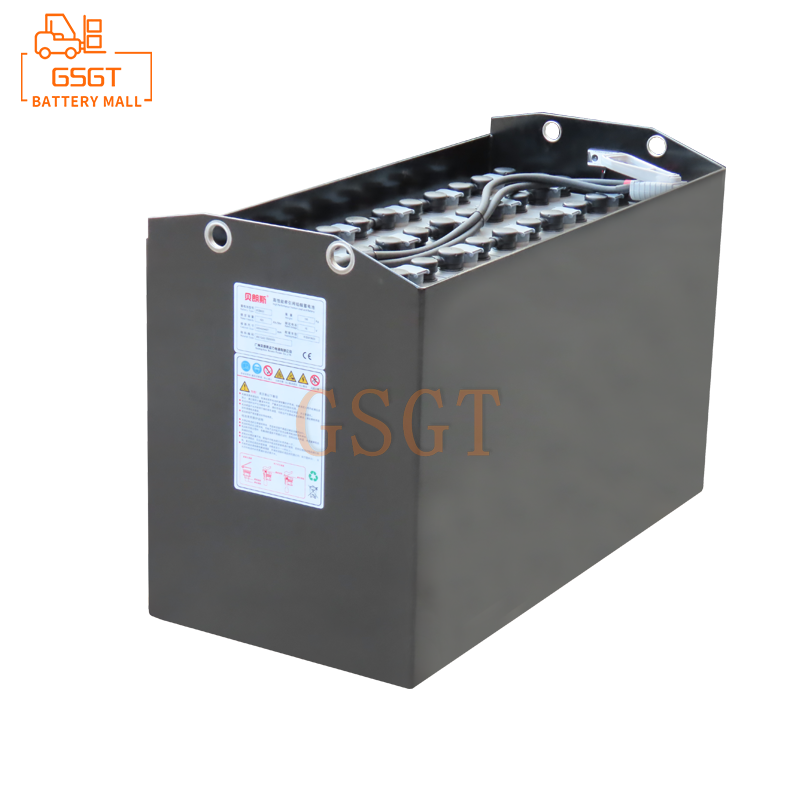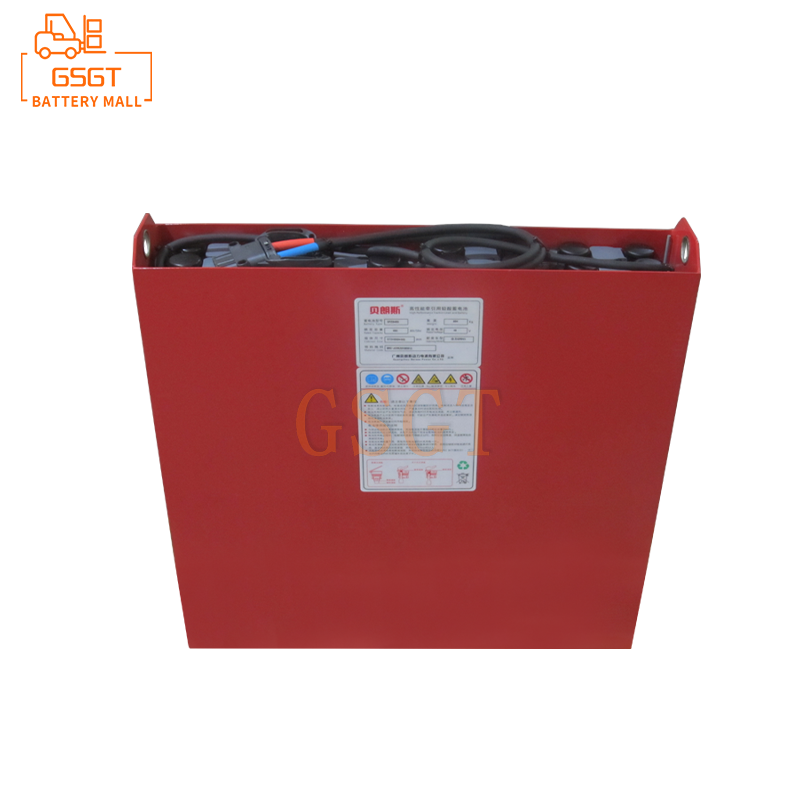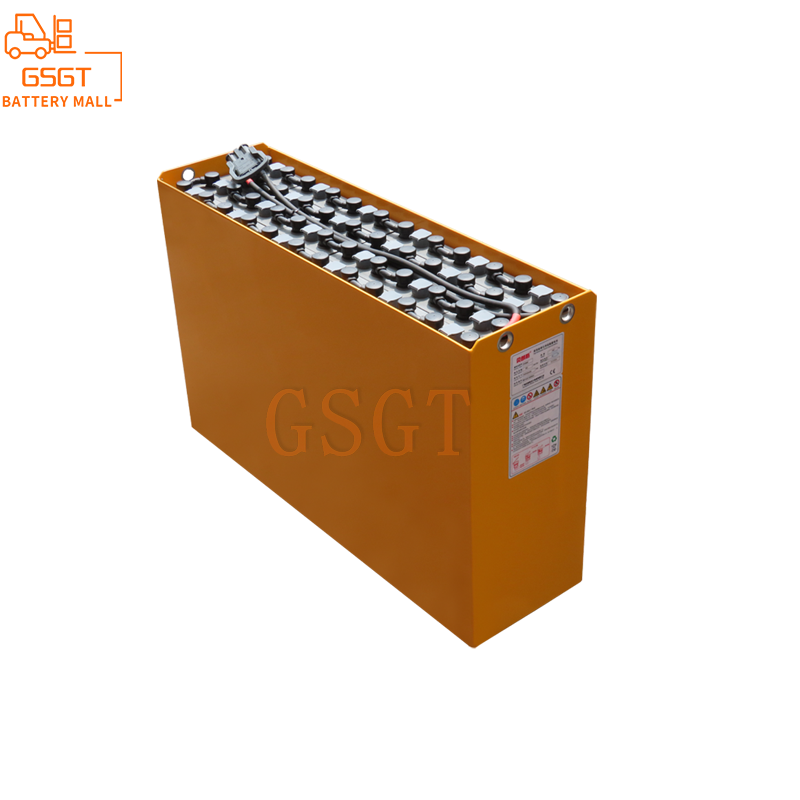Time:2025-05-29 08:52:02
Browse:591
In the modern logistics industry, forklifts, with their high efficiency and flexibility, have become the core equipment for goods handling and warehousing operations. As the power source of electric forklifts, the performance of lead-acid batteries directly affects the working efficiency and service life of the forklifts. However, plate sulfation is one of the most common and harmful faults in the use of forklift lead-acid batteries. Once plate sulfation occurs, it will not only lead to a decrease in battery capacity and a deterioration in charging and discharging performance, but in severe cases, it may even cause the battery to be scrapped. An in-depth exploration of the causes of plate sulfation and the adoption of effective preventive measures are of great practical significance for ensuring the normal operation of forklifts and reducing operating costs
1. The Principle and Manifestations of Plate Vulcanization
The working principle of lead-acid batteries is based on the electrochemical reaction between the active substances on the plates and sulfuric acid in the electrolyte. Under normal circumstances, when a battery discharges, the active substances on the plates react with sulfuric acid to form lead sulfate. During charging, lead sulfate is reduced back to the active substances. However, when sulfidation occurs on the plates, a layer of hard, dense and poorly conductive white lead sulfate crystals will form on the surface of the plates. These coarse lead sulfate crystals cannot be completely reduced to active substances during the normal charging process, thereby hindering the normal progress of the electrochemical reaction.
From the appearance, the surface of the vulcanized plates is rough and the color is white, which is significantly different from the brownish or gray color of normal plates. During the usage process, there will be a significant decrease in the battery capacity, and the forklift's driving range will be shortened. When charging, the voltage rises rapidly, and the "boiling" phenomenon occurs prematurely, but the actual charge is not fully charged. During discharge, the voltage drops rapidly and fails to meet the power demand for normal operation of the forklift, etc.
2. Main Causes of Plate sulfation
(1) Long-term insufficient charging
Forklift operations are characterized by continuity and high intensity. If the charging time is insufficient or the charging voltage and current are not set reasonably, the battery will not be fully charged. In this case, the lead sulfate on the plates cannot be completely converted into active substances. Over a long period of accumulation, coarse lead sulfate crystals will form, leading to sulfation of the plates. For instance, some enterprises, in an attempt to enhance the operational efficiency of forklifts, rush to put them into use before the batteries are fully charged, or use inferior chargers that fail to provide stable and appropriate charging parameters, all of which can easily lead to insufficient charging.
(2) The electrolyte level is too low
Sulfuric acid in the electrolyte is an important participant in the electrochemical reaction of lead-acid batteries. When the electrolyte level is too low, the upper part of the plate will be exposed to the air and cannot fully contact the electrolyte. This part of the plate is prone to sulfation during charging and discharging due to incomplete reaction. There are various reasons for the electrolyte level being too low, such as poor sealing of the battery causing electrolyte evaporation, electrolyte overflow due to jolting and vibration during forklift operation, and failure to replenish water in time. In addition, the evaporation rate of water in the electrolyte is faster than that of sulfuric acid. If only sulfuric acid is added without distilled water, the density of the electrolyte will be too high, accelerating the sulfation of the plates.
(3) The electrolyte density is too high
Excessively high electrolyte density will accelerate the corrosion and aging of the active material on the plates, and at the same time, it will also promote the formation and growth of lead sulfate crystals. In actual use, some operators blindly increase the density of the electrolyte in pursuit of higher voltage and capacity, not realizing that doing so will cause serious damage to the battery. In addition, the ambient temperature also has an impact on the density of the electrolyte. In a high-temperature environment, if the density of the electrolyte is not adjusted in time, it is also easy to cause sulfation of the plates.
(4) Improper long-term storage
During the period when forklifts are idle or seasonally out of use, if the battery is not stored properly, it can also lead to sulfation of the plates. When a battery is stored in a state of low charge, lead sulfate on the plates will recrystallize in the electrolyte, forming coarse crystals. Moreover, during storage, if the environmental humidity is relatively high, it will cause the battery casing to get damp, leading to intensified self-discharge and further increasing the degree of sulfation on the plates. In addition, if long-term stored batteries are not regularly replenished and activated, it will also accelerate the sulfation of the plates.
(5) Frequent high-current discharge
When forklifts are started, climbing slopes, or transporting heavy objects, they will generate a relatively large discharge current instantaneously. If such high-current discharges occur too frequently, the active substances on the plates will be consumed more rapidly due to intense reactions, and at the same time, the surface temperature of the plates will rise, promoting the formation of lead sulfate crystals. In addition, when the battery power is about to run out and the forklift is still used for operation, it will cause excessive discharge of the plates and accelerate the sulfation of the plates.
3. Preventive Measures for Plate Sulfation
(1) Standardize charging operations
Choose a reliable and compatible charger and set the charging parameters strictly in accordance with the battery's user manual. Each charging time should be sufficient. Generally, after the battery is fully charged, a float charge of 1 to 2 hours should be carried out to ensure that the lead sulfate on the plates is fully reduced. Establish a charging record system to document the time, voltage, current and other data of each charge, so as to facilitate the timely detection of abnormal charging situations. Meanwhile, regular maintenance and calibration of the charger should be carried out to ensure the stability and accuracy of charging.
(2) Maintain an appropriate electrolyte level
Regularly check the height of the electrolyte level, usually at least once a week. When the electrolyte level drops below the minimum mark, distilled water or dedicated lead-acid battery replenishment fluid should be replenished in a timely manner, and sulfuric acid should be avoided. When replenishing the liquid, the liquid level should be controlled between the highest and lowest mark lines. In addition, strengthen the inspection of the sealing performance of the battery, deal with the leakage of the electrolyte in a timely manner, and reduce the evaporation and overflow of the electrolyte.
(3) Reasonably control the density of the electrolyte
Adjust the density of the electrolyte reasonably according to the ambient temperature of the battery's usage and the user manual. In the high-temperature environment of summer, the density of the electrolyte should be appropriately reduced to prevent it from being too high due to the increase in temperature. In the low-temperature environment of winter, the density of the electrolyte should be appropriately increased to enhance the low-temperature performance of the battery. Meanwhile, use a hydrometer to measure the density of the electrolyte regularly to ensure it is within the specified range. If abnormal density of the electrolyte is found, it should be adjusted in time.
(4) Properly store idle batteries
When a forklift is idle for a long time, the battery should be fully charged first, and then a supplementary charge should be carried out every two weeks to prevent the battery from being discharged due to self-discharge. The storage environment should be kept dry and well-ventilated to avoid damage to the battery caused by moisture and corrosive gases. In addition, the self-discharge current can be reduced by disconnecting the negative terminal connection wire of the battery. For batteries that have been stored for a long time, before they are put back into use, multiple charge and discharge cycles should be carried out to activate the batteries and restore their performance.
(5) Avoid frequent high-current discharges
During the operation of forklifts, sudden acceleration, sudden braking and frequent starts should be avoided as much as possible to reduce the frequency of high-current discharges. Arrange the operation tasks of forklifts reasonably to avoid overloading and long-term continuous operation. When the battery power remains at 20% to 30%, it should be charged in time to prevent excessive discharge. At the same time, strengthen the training of forklift operators to enable them to understand the working principle and correct usage method of lead-acid batteries, and improve their operational skills and maintenance awareness.
(6) Regular maintenance and inspection
Establish a complete battery maintenance system and conduct regular maintenance work such as appearance inspection, voltage measurement, and electrolyte density detection on the batteries. Through visual inspection, problems such as sulfidation of the plates, deformation of the plates, and damage to the outer shell can be detected in a timely manner. Through voltage measurement and electrolyte density detection, the charging and discharging performance as well as the internal state of the battery can be grasped. Once any abnormal condition of the battery is detected, it should be dealt with promptly to prevent the problem from worsening. In addition, regular deep discharge and equalization charging of the battery can be carried out to eliminate the risk of sulfation on the plates and extend the service life of the battery.
4. Conclusion
Plate sulfation is one of the main problems faced by forklift lead-acid batteries during use. Its causes are complex and diverse, involving multiple links such as charging, use and storage. By thoroughly understanding the principles and causes of plate sulfation, and taking a series of effective preventive measures such as standardized charging operations, maintaining an appropriate electrolyte level, reasonably controlling the density of the electrolyte, properly storing idle batteries, avoiding frequent high-current discharges, and regular maintenance and inspection, the incidence of plate sulfation can be significantly reduced, and the performance and service life of lead-acid batteries can be improved. Ensure the normal operation of forklifts and reduce the operating costs of enterprises. In practical work, logistics enterprises and forklift operators should attach great importance to the maintenance and management of lead-acid batteries, implement measures to prevent sulfation of the plates, and thereby improve the efficiency and economic benefits of logistics operations.

$2450

$1440

$515

$2530

MESSAGE
Professional And Efficient
Security
Affordable Price
Professional Services